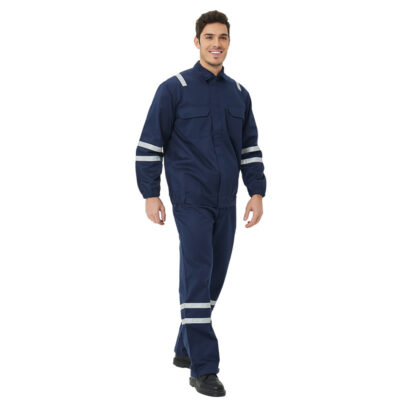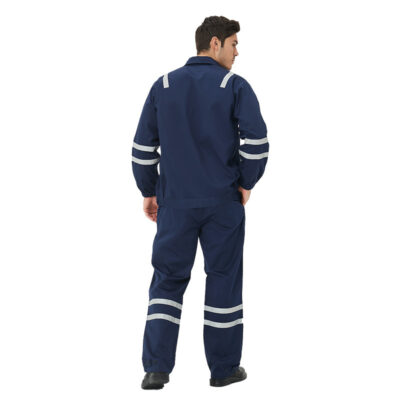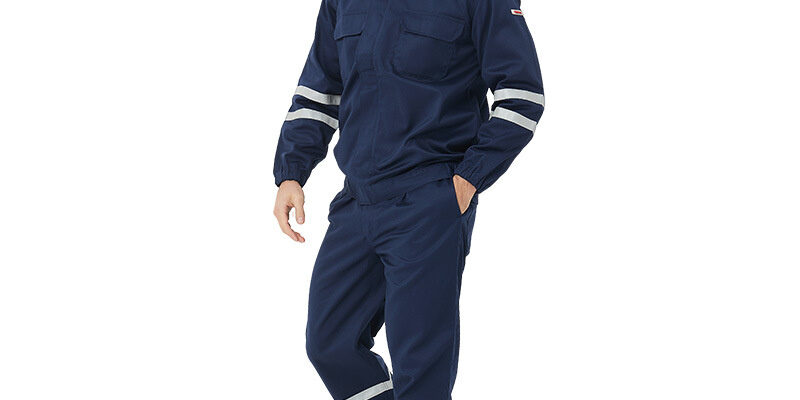Corporate Image Meets Function: Building a Branded Work Suit Program
Introduction: Why Work Suits Matter for Corporations
In today’s competitive business world, uniforms do more than just dress employees—they represent brand identity, professionalism, and reliability. Among the various types of corporate workwear, branded work suits stand out as a powerful tool to align employee appearance with company image while ensuring day-to-day functionality.
For B2B buyers and procurement managers, building a work suit program is not just about fashion—it’s about balancing corporate branding, employee comfort, and long-term durability.
👔 The Role of Corporate Image in Uniform Design
Corporate image is shaped by visual consistency. A well-structured work suit program ensures that every employee reflects the same level of professionalism, whether at the front desk, in customer-facing sales, or during trade shows.
Key benefits of branded work suits:
-
✨ Professional Appearance: Reinforces trust with clients and partners.
-
🎨 Brand Alignment: Logos, colors, and trims reflect corporate identity.
-
📸 Marketing Impact: Employees become walking brand ambassadors.
This makes work suits especially important for companies in banking, hospitality, real estate, and corporate services, where image directly influences customer perception.
🧵 Balancing Style and Functionality
While corporate image is critical, procurement leaders cannot ignore practical performance. Work suits must be designed to withstand frequent wear and laundering while maintaining a polished look.
Functional considerations include:
-
🌬️ Breathable Fabrics: Comfort during long hours of wear.
-
🛡️ Durability: Reinforced seams and wrinkle-resistant finishes.
-
🧽 Easy Maintenance: Fabrics that resist stains and shrinkage.
-
⚡ Fit Options: Tailored cuts for men and women, ensuring inclusivity.
When sourcing at scale, these details determine whether the program succeeds in both image and longevity.
📊 Customization Options for Branded Work Suits
Modern manufacturers offer extensive customization to align suits with corporate branding strategies. Procurement teams can specify:
-
👕 Fabric Selection: From premium wool blends to stretch poly-viscose.
-
🎨 Color Matching: Aligning uniforms with company logos and brand palettes.
-
🧵 Branding Methods: Embroidery, woven labels, or discreet patches.
-
👔 Design Variations: Single-breasted vs. double-breasted jackets, slim vs. classic fit.
Customization ensures that suits are not only practical but also visually distinctive, reinforcing a company’s professional standing.
🌐 Partnering with Expert Manufacturers
To achieve the right balance between branding and function, it’s essential to partner with experienced suppliers. Professional Workwear Manufacturers can provide bulk solutions, advise on fabric choices, and guarantee compliance with corporate standards.
For tailored, image-driven uniforms, our dedicated Work Suit Manufacturers offer expertise in creating suits that deliver both style and practicality at scale.
🔑 ROI of a Branded Work Suit Program
A well-executed work suit program is an investment rather than an expense. Benefits include:
-
💼 Improved Client Perception: Staff present a consistent, polished look.
-
🧑🤝🧑 Employee Confidence: Workers feel more professional in tailored suits.
-
📉 Cost Efficiency: Durable fabrics and consistent supply reduce replacement costs.
-
🌍 Brand Awareness: Company image is reinforced in every interaction.
For corporations aiming to strengthen their market position, branded work suits deliver both tangible and intangible ROI.
Conclusion: The Future of Corporate Workwear
Corporate work suits embody the perfect blend of image and function. They signal professionalism, unify staff under a brand identity, and withstand the demands of daily use.
🔎 By collaborating with expert manufacturers, companies can ensure their uniforms not only look sharp but also perform under real-world conditions. For procurement teams, the decision to build a branded work suit program is a strategic step toward long-term branding success and operational efficiency.





















